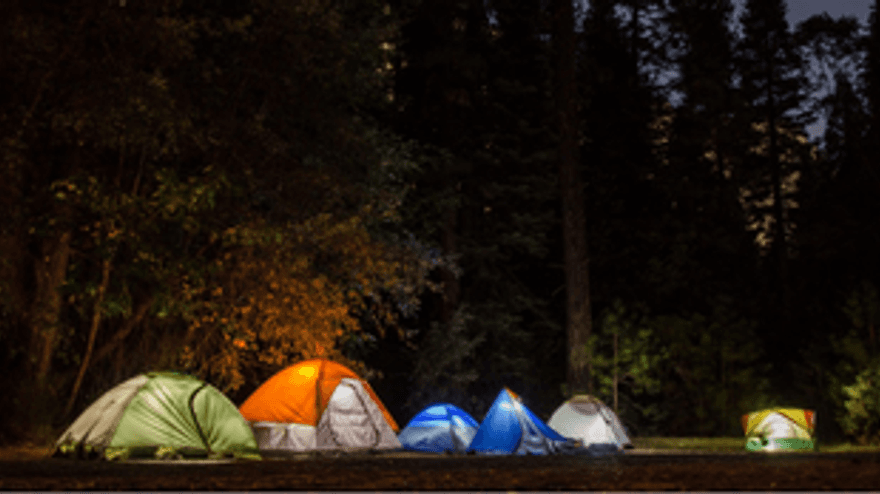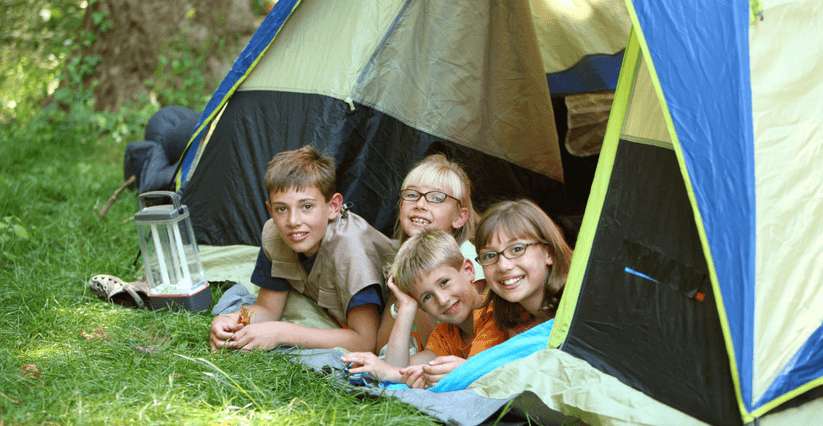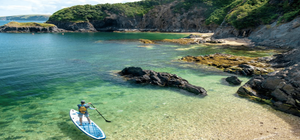8 April, 2022
There are lots of technical details you should be looking for when buying a tent, to know really which is the one best suited to your needs. But what about those little extras?

Yes, you need to look at the technical details when buying a tent, but what about the bonus features that will help to make your camping holiday that bit more relaxing and maybe even bring in some of those home comforts if one of you or your group is not so keen on the idea of camping?
In this feature, we’re going to look at “campsite tents” as they will differ from backpacking tents of which we’ll cover in a future article.
Surely they are all campsite tents? Not really... there's often a big difference between the size and weight of a backpacking tent compared to a campsite tent. Campsite tents are more often used for families or group camping and tend to offer larger living spaces as well as some of those home comforts that make your holiday that bit more enjoyable. Being bigger, they’re often a little bit heavier or take up a bit more space in your car, so you want to be thinking about the size and weight of them depending on transport and if you have a long way to walk to your designated pitch.
Tents filled with an inner tube style inflatable bladder are super quick to put up, lighter than your traditional pole tents and because of the flexible nature of the air filled tubes, generally speaking have good wind resistance as they move better with the wind when it picks up.
If you’re looking at the more traditional pole structure in your tent, pay attention to what the poles are made of. A lot of cheap tents are made using fiberglass poles which although light, can break more easily under excessive force ie it’s blowing a hooly outside. Although easy and fairly cheaper to replace than aluminum poles, they’re not built to last. Tents with aluminium or steel poles are often used in more harsh environments as they’re significantly stronger and offer better structural support.
You don’t need to be a top of the class scientist to understand how waterproof your tent is. You may see a term such as Hydrostatic Head and be confused as to what to look for. In essence, the greater the number, the greater the waterproof capabilities of your tent. As a guide, 0-1000m is water resistant (not proof). 1000-2000 is typically a lightweight hiking tent and 2000+ would be a bit more substantial and definitely suit your traditional summer in the UK
You’ll often see on a tent something called “season ratings”. This isn’t for how many seasons you could use the tent, it’s more to describe the type of weather it could withstand. For example a one season tent would be fine generally for warmer, less damp weather where as 4 or 5 season would be more withstanding of brutal winter conditions. Generally speaking for UK camping through the main summer season and into Autumn, a two or three season tent would suffice.
Check out our review of the UTOKA cooler here.

Here’s some of our top tips to help you decide on what tent is right for you.
Be realistic about how much space you need. If you want to bring your double inflatable bed with you, is your room big enough to accommodate it? The last thing you want is to be face to canvas have way through the night as the wind starts to pick up. Also how many rooms do you want? There’s plenty of options from simple 2 person tents through to ginormous 8+ sleeping spaces. We opted for one with four rooms so that each kid could have their own space to play with toys or books when we wanted a little respite from the weather.
If the weather turns, where are you going to eat your dinner? It may seem like an obvious question, but often overlooked. With the changeable weather we have here in the UK, when it does start to rain just after you’ve cooked up a delicious BBQ, will you be eating on your bed? Or an extra little bit of space that you can put your chairs up inside? Not only that, when you do come back to your tent from a day at the beach or a long hike, do you have space to get changed easily? This really comes down to budget (how much you want to spend on a tent) and then weight – the bigger the tent, the heavier it will likely be.
If you were planning for longer campaign holidays does your tent have a little zipped flap close to the floor to feed in a cable from the campsites charge points? When we camped through France one summer, we had a mini portable fridge with us (more of a cool box) which when we had two toddlers in tow, meant we could keep things cool in the 40+ degree heat of the French summer.
How many entrances do you have? Does it matter? Not really, but, if the prevailing wind changes direction and the rain starts to pour having an alternative entrance on the other side that may keep your living space a little more dry is a blessing in disguise when you’re trying to get your troops ready for a muddy hike. A luxury to have more than one entrance, but it does also mean on those warmer days you can get a bit of a draft blowing through your tent.
Most tents are now equipped with handy storage pockets throughout the tent. Not just the traditional low-level pockets around your sleeping area (great for storing keys / phones at night) but also hanging storage through often the central dividers of the living / sleeping spaces within your tent. Handy for quick access to your headtorch and other essentials or as my kids like to do, fill one side up with their favourite toys and books. Look for what storage options comes with your tent and think about how you will realistically be using them.

Outside & Active is the home for those who love the outdoors. Our mission is to inspire, inform and educate people about being active outdoors in a fun, safe and sustainable way. We provide inspiration, kit, tech and advice on adventure, camping, climbing, cycling, hiking, running water and winter.
Most recent articles by Outside & Active

Brooks supports trail runners to defy limits and empower their trail runs with the new Cascadia 18. The adaptable Cascadia combines DNA Loft v2 cushioning with TrailTack Green grip and a durable upper mesh to handle all terrains, providing necessary comfort and underfoot security on each surface.

Connectivity makes eBiking more customised, convenient and secure.

Various app solutions, interfaces and services as the next step for the eBike experience of tomorrow
Most recent articles in CAMPING

Set in Feanedock, this Festival is based in a 70-acre woodland site on the Leicestershire/Derbyshire border at the heart of the National Forest.

A stunning glamping and guest house business that sits alongside a UNESCO World Heritage Site has been placed on the market.

Camping and paddle boarding in Wales offers a great outdoor adventure combination and a ticket to explore more of the natural beauty of Britain. With Wales diverse blue spaces, paddle boarders can explore a variety of amazing waters—gentle rivers, mountain lakes, peaceful canals and stunning coastline. Ideal for everyone from beginners to seasoned paddlers, for a full immersion in blue space there is nothing better than camping by the water’s edge. Here are some of our favourite paddles close to camping sites with water access in Wales.